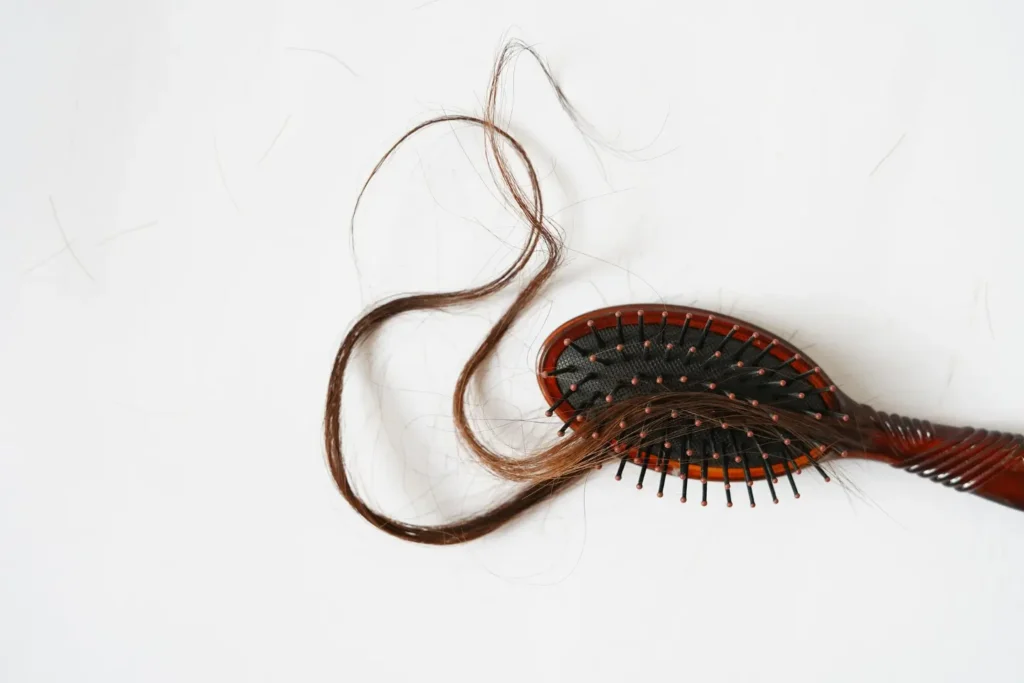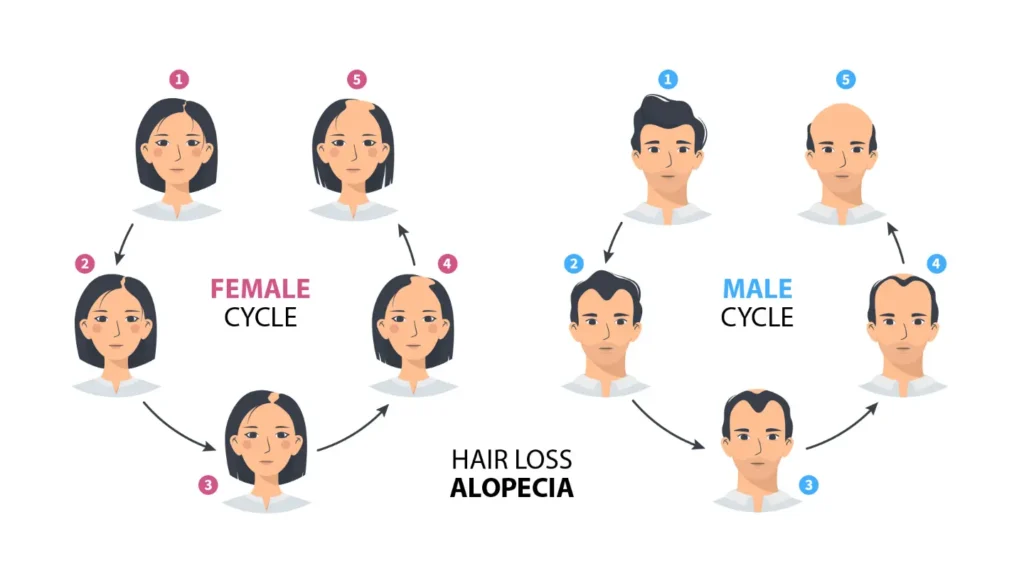Alopecia is a medical disorder afflicting millions of individuals worldwide, not only a matter of hair loss. Those who go through it may find a tremendous psychological and emotional toll. Managing either full baldness or patchy hair loss depends on knowing the kinds, reasons, and treatment choices. This guide will bring you through all you need to know about alopecia, including expert-recommended treatments, hair extensions, wigs, and naturally occurring hair care items that might help.
What Is Alopecia?
The medical term for hair loss anywhere on the body is alopecia. Often on the scalp, alopecia areata is the most frequent kind and is an autoimmune disorder in which the immune system targets hair follicles incorrectly. Although the disorder causes no physical suffering, the emotional toll can be significant.
Dermatologist Dr Angela Lamb, board-certified, says, “Alopecia can be erratic.” While some may have regrowth, others could suffer more continuous hair loss. Early diagnosis and investigating therapy choices that fit personal needs are the keys.
Understanding Alopecia: Types of Hair Loss
Alopecia comes in numerous types, each influencing hair loss in unique ways:
Alopecia Areata: Most often occurring on the scalp, alopecia areata is the most frequent type, producing small, circular bald patches.
Alopecia Totalis: A more severe variant, alopecia Totalis causes total loss of scalp hair.
Alopecia Universalis: The most severe form is alopecia universalis, which causes loss of all hair on the scalp and body—including eyebrows and eyelashes.
Diffuse Alopecia Areata: Distinctive Alopecia Areata causes hair to thin gradually rather than in discrete spots.
Ophases Alopecia Areata: Around the back of the scalp and sides, hair loss follows a band-like pattern.
The National Alopecia Areata Foundation estimates that alopecia areata affects about 7 million Americans. Although the ailment can strike anyone at any age, it is more likely in children and those from families with autoimmune diseases.
Causes of Alopecia
Though other variables can also play a role, alopecia is essentially an autoimmune condition.
Autoimmune Triggers: The immune system assaults healthy hair follicles, mistaking them for foreign invaders. Inflammation and hair loss follow from this.
Genetics: Your genetic make-up can raise your risk. Your odds of having alopecia are increased if you have a family member with lupus, diabetes, or another autoimmune disease.
Environmental and Emotional Stress: Many patients report major life stresses prior to the start of their ailment, even though no clear research links stress to alopecia. Dermatologist Dr. Melissa Piliang of Cleveland Clinic notes, “Stress is a possible factor, but we need more research to make a solid connection.”
Diet and Nutritional Deficiencies: Growing hair depends on nutrients. Particularly in vitamin D and iron, poor diet or vitamin shortages can cause alopecia to worsen or thinning of hair.
Treatment Options for Alopecia
Though there is no cure for alopecia, some treatments can help control hair loss and encourage regrowth.
- Corticosteroids:
Often used to treat autoimmune diseases, corticosteroids are anti-inflammatory medications. One can take them orally, topically, or directly into the scalp. “For patients with smaller patches of hair loss especially,” says Dr Lamb, “corticosteroid injections are often the first line of defence for alopecia areata.”
- Minoxidil (Rogaine)
Though it can also induce regrowth in alopecia areata, this over-the-counter topical medication is well-known for treating male and female pattern baldness. Results can take up to 12 weeks to show, though, and for more severe cases like alopecia totalis or alopecia universalis, they are not always reliable.
- PRP (platelet-rich plasma) therapy
Drawing a patient’s blood, processing it to concentrate platelets, and then injecting it into the scalp to stimulate hair follicles is the basis of PRP treatment. Though still under experimental status, Dr. Piliang observes that “early studies show promise in using PRP to trigger hair regrowth in alopecia patients.”
- JAK Inhibitors:
Approved by the FDA recently, JAK inhibitors such as Baricitinib have demonstrated notable success in treating severe forms of alopecia. These drugs assist in stopping the attack of the immune system on hair follicles. Clinical studies show that, within six months, thirty to fifty per cent of patients had notable hair growth.
- Radiology: Phototherapy
Alopecia areata has been treated with ultraviolet light therapy (PUVA or PUVB), usually in conjunction with other treatments like psoralen, a medication that increases skin sensitivity to light.
Hair Extensions for Alopecia
Hair extensions can provide a temporary reprieve from the obvious consequences of alopecia for people seeking a cosmetic fix during therapy. Clip-ins or wigs created from genuine hair, especially extensions, can replace thinning regions without aggravating more damage.
Selecting extensions requires careful consideration of premium materials that are free from irritation of the scalp. Because these techniques might tug on current hair and aggravate the problem, experts advise clip-in extensions over glued or sewed-in versions.
Wigs for Alopecia
For those with more advanced hair loss—alopecia totalis or alopecia universalis—wigs offer a great choice. Custom-made wigs, sometimes known as scalp prostheses, are designed to suit your head precisely, thereby enhancing their natural look. Although synthetic wigs are less expensive than genuine hair wigs, their lifetime may be shorter.
“Consider wigs that are breathable and made of hypoallergenic materials to avoid scalp irritation,” Dr Lamb counsels patients. Additionally, there are cranial prostheses, specifically made wigs, that some insurance policies should cover, should a doctor recommend them.
Alopecia Hair Spray and Natural Shampoos
By adding texture and volume, specialized hair sprays meant for those with alopecia help to hide thinning sections. Usually composed of microfibers, these sprays mix effortlessly with your natural hair to give the impression of more fullness. Certain elements are even meant to encourage hair renewal.
Many doctors advise natural shampoos devoid of strong ingredients like parabens and sulfates, which can aggravate a sensitive scalp even more. For calming the scalp and encouraging a better hair environment, ingredients including biotin, argan oil, and tea tree oil help.
Dr Piliang says,
“Switching to natural hair products can reduce scalp inflammation and improve hair texture, making it a good complementary approach to alopecia treatment.“
Psychological Impact and Coping Strategies
Alopecia influences your emotional health as much as your appearance. Particularly in obvious places like the scalp or eyebrows, hair loss can cause stress, anxiety, and even melancholy. Forty per cent of patients with alopecia areata said they suffered emotionally in a research written up in the Journal of Investigative Dermatology.
For others coping with the emotional toll of hair loss, support groups, internet forums, and counselling can be quite helpful. Additionally proven to help control anxiety and despair connected to alopecia is cognitive-behavioral therapy (CBT).
Conclusion
A complicated disorder, alopecia can differ greatly between one individual and another. Although there is no one clear cure, there are plenty of therapy choices ranging from cosmetics like wigs and hair extensions to drugs including corticosteroids and JAK inhibitors. Early diagnosis and close cooperation with a healthcare provider to identify a treatment plan suitable for you are the keys. While some people may find their hair growing back, others may find equally vital control of the psychological and emotional elements.
See a board-certified dermatologist for a customized treatment plan if you or someone you know is losing their hair.


